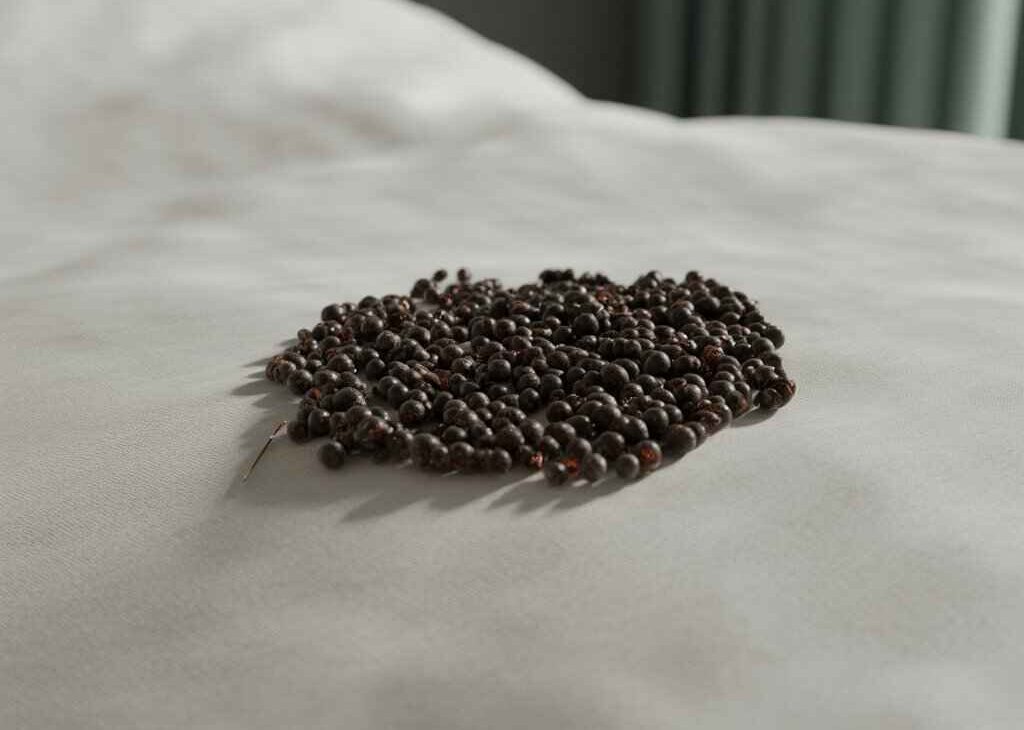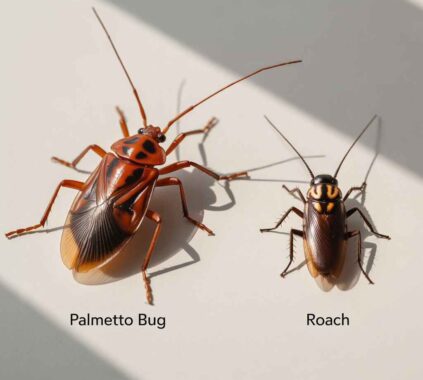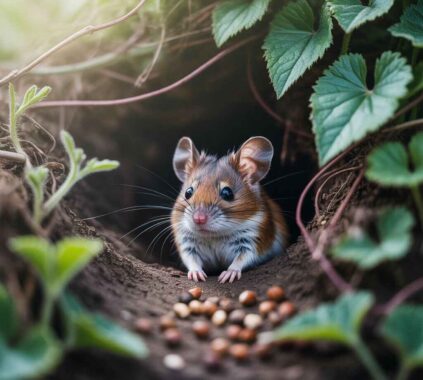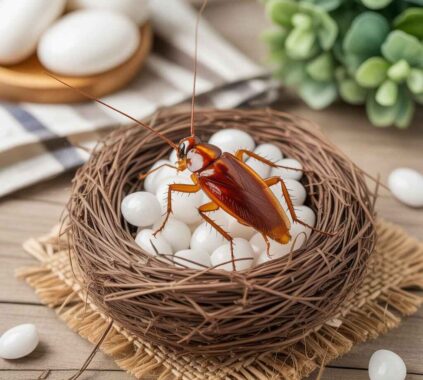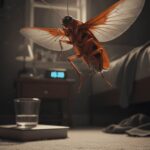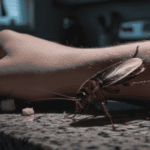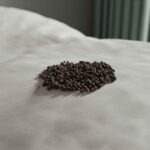Table of Contents
When it comes to bed bug infestations, identifying the signs early is crucial in preventing them from spreading throughout your home. One of the most subtle yet telling signs of a bed bug problem is the presence of bed bug droppings. But what exactly do bed bug droppings look like, and how can you tell if they’re an early warning of an infestation? In this guide, we’ll dive deep into identifying bed bug feces, understanding its significance, and what you can do to tackle the problem effectively.
Bed Bug Droppings Pictures: What Do They Look Like?
At first glance, bed bug droppings might appear like tiny dark spots scattered on your mattress, furniture, or walls. These spots aren’t just any dirt or stain; they’re a clear sign of the presence of bed bugs. So, what exactly are these spots? Bed bug droppings are essentially digested blood that the pests excrete after feeding.
Bed bugs feed on the blood of humans and animals while they sleep, and they often leave behind small, dark, rust-colored stains on the surfaces where they’ve been. These stains are the remains of partially digested blood, making them darker in color and easier to spot as the blood dries and condenses. If you find these tiny, ink-like spots, it’s time to pay attention.
Why Do Bed Bugs Leave Droppings?
Bed bugs need to feed on blood to survive, and after they’ve consumed their meal, they need to expel the excess liquid from their bodies. This is where bed bug droppings come in. The blood they ingest is condensed and then excreted, creating the small, dark spots you see on your furniture, bed, or walls.
These droppings are a critical sign that bed bugs have been present, and knowing how to identify them can help you quickly address an infestation before it gets out of hand. Bed bug feces are typically found in areas where the bugs tend to hide or travel, including the seams of your mattress, the cracks in your bed frame, or the edges of your carpet.
Bed Bug Droppings on Sheets: Where to Find the Clues
Knowing where to look is essential. Here are the key areas where bed bug droppings are most likely to be found:
- On your mattress: Check along the seams, corners, and edges where bed bugs like to hide. Look carefully under the sheets and any folds.
- Behind or under your headboard: Bed bugs often hide in these areas because they offer a safe, dark place.
- Along the edges of the walls: Bed bugs often travel along baseboards and can leave feces as they go.
- On your carpet or flooring: While less common, droppings can sometimes end up here, especially in heavily infested rooms.
- Behind furniture: Look for bed bug droppings behind or under any furniture that sits close to your bed or walls.
Bed Bug Eggs: An Early Indicator of Infestation
Besides droppings, bed bug eggs can also be a sign that these pests have taken residence in your home. Bed bug eggs are tiny, about the size of a pinhead, and typically pearl-white in color. They are often found in the same places as bed bug droppings, such as the seams of mattresses, cracks in the furniture, or behind headboards.
If you spot bed bug eggs, this means that the infestation is not only present but also reproducing. It’s time to take immediate action before the problem escalates.
Bed Bug Droppings on Pillow: Identifying Bed Bugs in Your Bedding
If you find bed bug droppings on your pillow, it’s a clear sign that these pests are feeding on you while you sleep. Check for small, dark spots along the edges and seams of your pillow and bedding. Bed bugs typically feed at night, so you may not notice the bites immediately, but the droppings are an undeniable indicator of their presence.
Bed Bug Droppings but No Bugs: What Does It Mean?
You may notice bed bug droppings but have trouble spotting any actual bugs. This is common in the early stages of an infestation, as bed bugs are nocturnal creatures and tend to hide during the day. It’s important to understand that finding bed bug but no visible bugs doesn’t mean the infestation isn’t happening—it simply means they’re well-hidden.
In this case, look for additional signs like shed skins, eggs, or the faint smell of bed bugs to confirm your suspicion. You can also consider using a bed bug trap to capture any hidden pests.
Pictures of Bed Bug Droppings on Mattress: How to Spot Early Signs
Pictures of bed bug droppings on mattress can provide a clear visual representation of what to look for when inspecting your home. Bed bug droppings on mattresses are usually found in clusters along seams and edges. They’ll appear as dark, rust-colored or black spots.
Be sure to carefully check the underside of your mattress and any folds or creases. If you spot several spots, it’s a strong indication of bed bug activity in that area.
Bed Bug Droppings on Wall: Other Places to Search
If you find bed bug droppings on the wall, it’s likely that the infestation has spread beyond your bed. Bed bugs are known to hide in cracks and crevices, including in the walls behind pictures, furniture, or loose wallpaper. The bed bug droppings on the wall could indicate that the bugs are traveling through the area to reach their feeding grounds.
Be sure to check behind pictures, in the junctions of walls and ceilings, and in any other hidden areas. Bed bug droppings on the wall are a sign that these pests are more widespread in your home than initially thought.
Bed Bug Droppings Identification: How to Know for Sure
Identifying bed bug droppings can be tricky if you aren’t familiar with what to look for. However, once you know the key characteristics, it becomes much easier:
- Color: Bed bug droppings are typically dark brown, rust-colored, or black due to the digested blood.
- Size: The spots will usually be about the size of a pinhead or a dot from a marker.
- Smell: If you notice a musty, sweet, or rusty odor, this is another indicator of bed bug droppings.
When in doubt, use pictures and images of bed bug droppings to compare what you’ve found with known samples. Websites like Terminix and Orkin offer helpful resources for visual identification.
What to Do if You Find Bed Bug Droppings
Finding bed bug droppings can be unsettling, but it’s important to stay calm and act quickly. Here’s what you should do next:
Step 1: Inspect Your Home
Once you’ve identified the droppings, it’s time to do a thorough inspection of your home. Check your mattress, furniture, and other areas where bed bugs might be hiding. Pay attention to corners, seams, and creases. Be sure to look for other signs of an infestation, such as live bed bugs, eggs, or molted skins.
Step 2: Clean the Affected Areas
If you find evidence of a bed bug infestation, it’s essential to clean the affected areas as thoroughly as possible. Wash your bedding, sheets, and clothing in hot water, and vacuum any areas where droppings have been found. Be sure to discard the vacuum bag immediately to prevent re-infestation.
Step 3: Contact a Professional
Although cleaning can help reduce the number of bed bugs, getting rid of them entirely requires professional help. Bed bug exterminators have the tools and expertise needed to eliminate the infestation completely. They’ll perform a thorough inspection, use the right treatments, and ensure your home is bed bug-free.
Learn more about professional help from bed bug exterminators.
Preventing Future Infestations
Now that you’ve dealt with the current infestation, it’s time to prevent another one from happening. Here are some steps you can take to protect your home from bed bugs:
- Seal cracks and crevices around windows, doors, and furniture to limit potential hiding spots.
- Use mattress encasements that trap any bed bugs inside and prevent new ones from entering.
- Inspect second-hand furniture thoroughly before bringing it into your home.
- Travel smart: Always inspect hotel rooms for signs of bed bugs, and keep your luggage off the floor.
Why You Should Act Fast
The key to preventing a bed bug infestation from getting out of control is early detection. Bed bug droppings are one of the first signs of an infestation, and if you notice them, it’s time to act quickly. Ignoring the problem can lead to more bed bugs, more bites, and a much bigger cleanup job. Professional help is the best way to ensure your home stays bed bug-free.
FAQS:
What do bed bug droppings look like?
Small, dark, rust-colored or black spots on surfaces like mattresses or walls, made from digested blood.
Where can I find bed bug droppings?
Common spots include mattress seams, furniture cracks, behind headboards, and along baseboards.
Can bed bug droppings appear without seeing the bugs?
Yes, droppings can appear before bugs are visible, as they hide during the day.
Are bed bug droppings a sign of a severe infestation?
Not always, but they do indicate an active infestation that should be addressed promptly.
How do I get rid of bed bug droppings?
Wash bedding, vacuum thoroughly, and consider professional pest control for full eradication.
Conclusion:
Identifying bed bug droppings early on is crucial in stopping an infestation in its tracks. If you notice tiny, dark spots on your bed, mattress, or walls, it’s time to take action. Remember, bed bug droppings are a sign that these pests have already been in your home, but they’re also a sign that you can take control before the problem gets worse. By following the steps above and consulting a bed bug control service, you can rid your home of these pesky pests and get back to enjoying a peaceful, pest-free life.

